
Annual Forbs Around Las Vegas, Vegetation Around Las Vegas
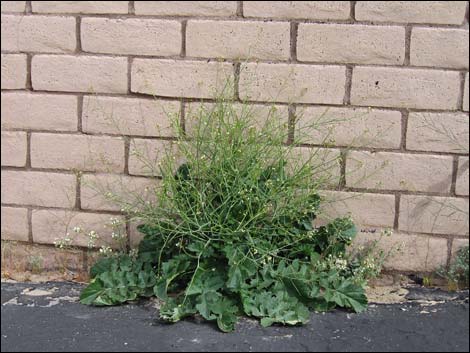 Basal leaves with upright flower stalks |
General: Sahara Mustard (Brassica tournefortii), also called African Mustard, is an annual forb with basal leaves, several flowering stalks, and yellow flowers. The basal leaves are dissected with 6-14 pairs of lateral lobes, and the terminal lobe is about the size of lateral lobes. The flowers are yellow with four narrow petals. The plant dies after it flowers, leaving open, upright stalks that are highly flammable. The basal leaves are covered with tiny bumps and prickles. Sahara Mustard is a common component of disturbed desert vegetation communities. Around Las Vegas, look for this species in town and in disturbed roadsides and open fields. This is a Category-B Noxious Weed in Nevada. If hikers and other visitors to the native habitats around Las Vegas see this species, please report the observation to the Nevada Department of Agriculture using their online forms. If you have this species on your private property, please consider eradicating it. Family: Mustard (Brassicaceae). Other Names: Asian Mustard, African mustard, wild turnip. |
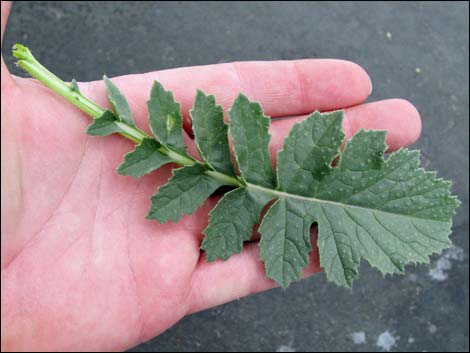 Leaf is deeply lobed |
Plant Form: Basal leaves with upright flower stalks. Height: To about 3 feet. Stems: Several flowering stalks. White hairs on lower stems dense and stiff; stems glabrous above. Leaves: Generally basal; generally broad and dissected (pinnately lobed) with 6-14 pairs of lateral lobes; terminal lobe about the size of lateral lobes. Upper leaves are small and oblong. Flowers: Blooms during early spring. Flowers clustered at the top of the flower stalks; petals 4, yellow. Petals long and narrow (about 4-8 mm long, 1-2 mm wide). Sepals about 3 mm long. Mature fruits 3-7 mm long, constricted between seeds; upright but spreading away from the stem. |
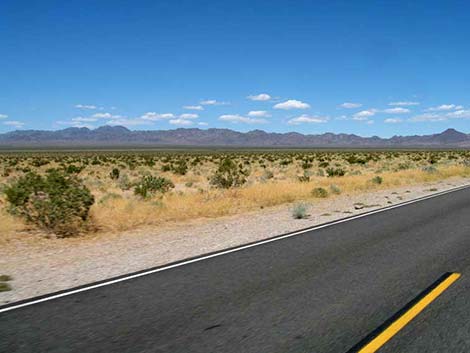 Sahara mustard is capable of taking over large areas |
Seeds: Tiny, many per plant. Habitat: Roadsides, disturbed sites; spreading into undisturbed desert sites. Elevation: To about 3,000 feet; usually lower elevations. Distribution: California to Texas and south into Mexico. Native to the Mediterranean region. Comments: This species is similar to Black Mustard, but the basal leaves are quite different, and the flowers petals differ too. |
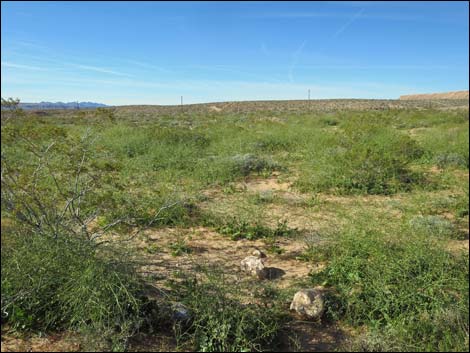 Fields of invading Sahara Mustard |
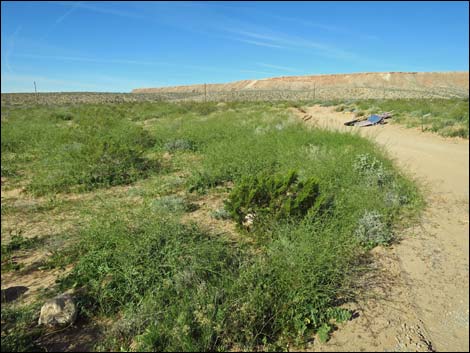 Fields of invading Sahara Mustard |
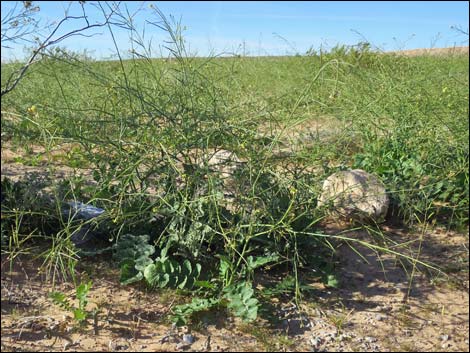 Fields of invading Sahara Mustard |
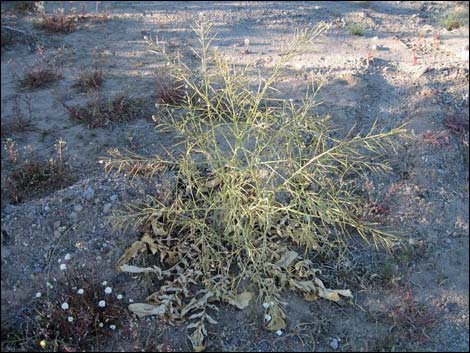 Drying plant |
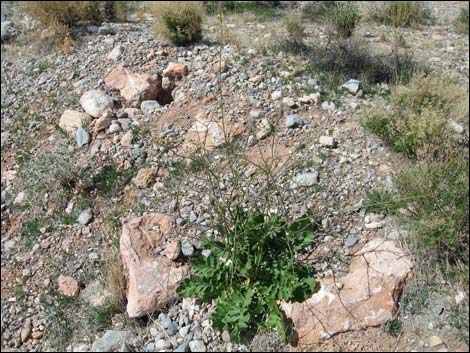 Thin flowering stalks emerge from `basal leaves |
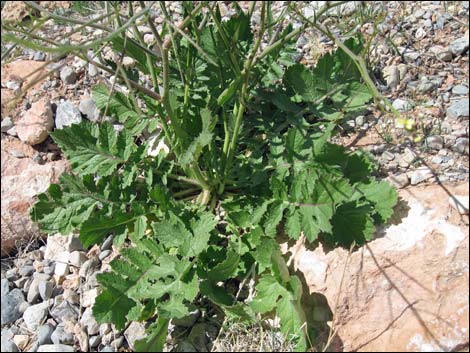 Mass of basal leaves |
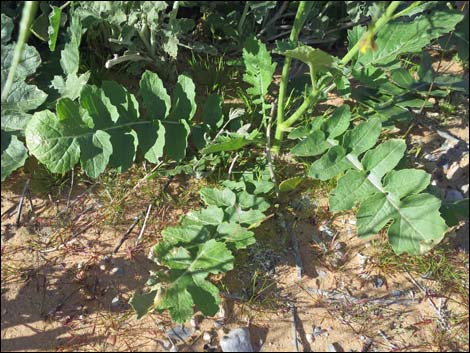 Basal leaves are broad and dissected |
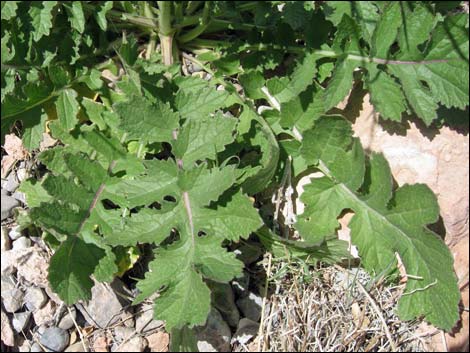 Basal leaves are broad and dissected with 6-14 pairs of lateral lobes |
 Single leaf, upper surface |
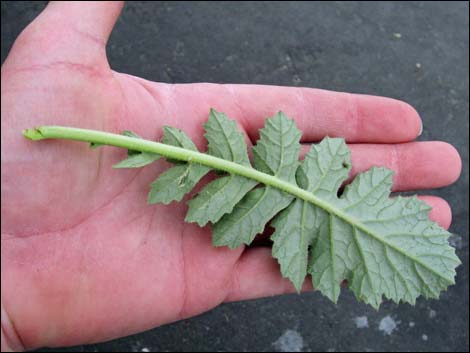 Single leaf, lower surface |
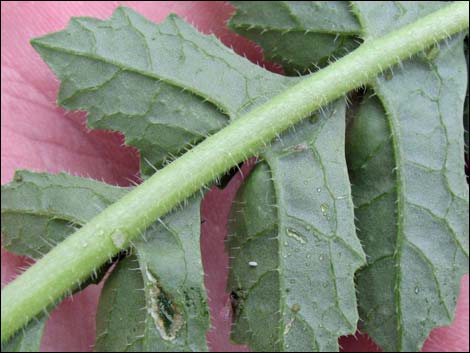 Leaf and stems have stiff prickles |
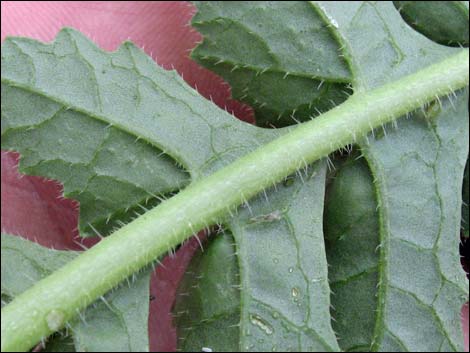 Leaf and stems have stiff prickles |
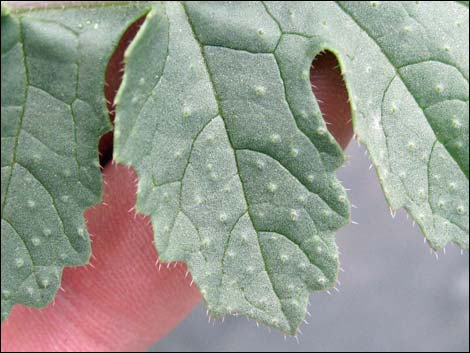 Stiff prickles on leaf edge and on bumps on upper surface |
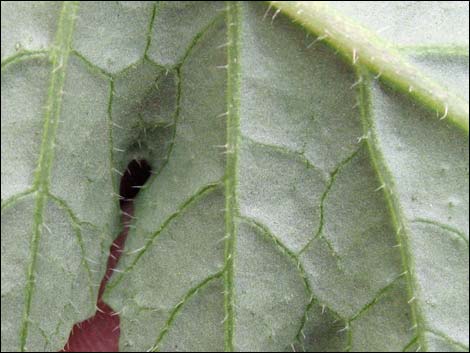 Stiff prickles on lower leaf surface |
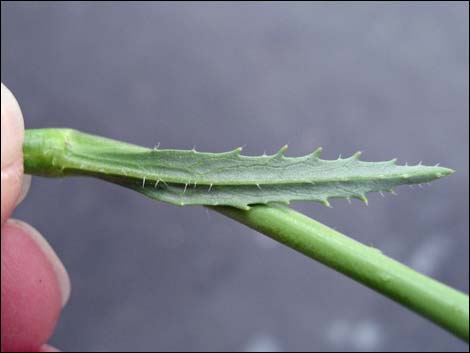 Upper leaves are different from basal leaves |
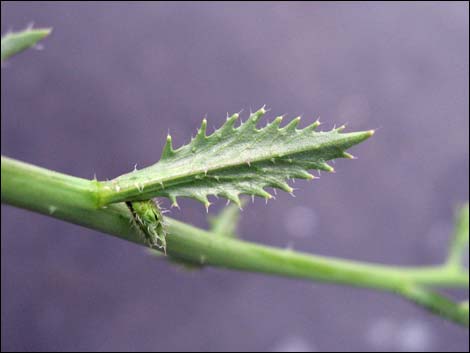 Upper leaf, lower surface |
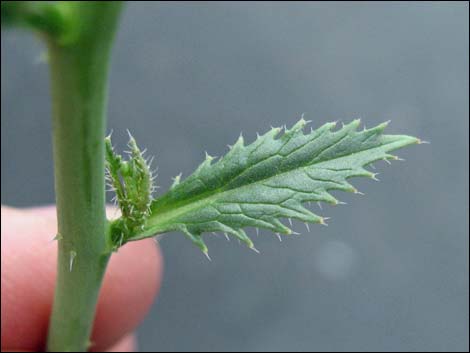 Upper leaf, upper surface |
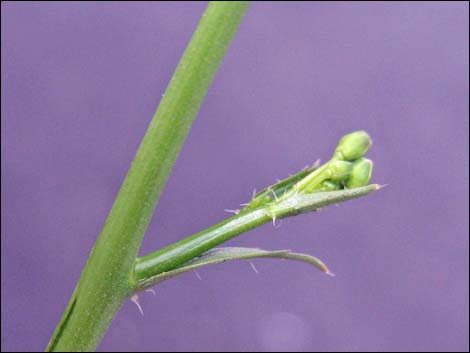 Flowers emerging from upper leaf axil |
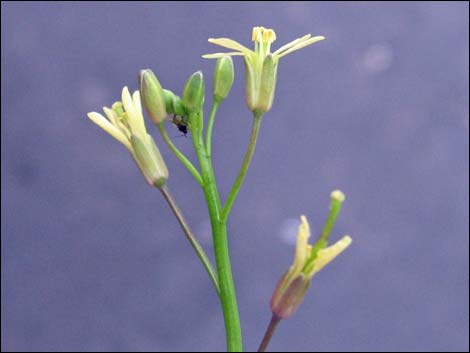 |
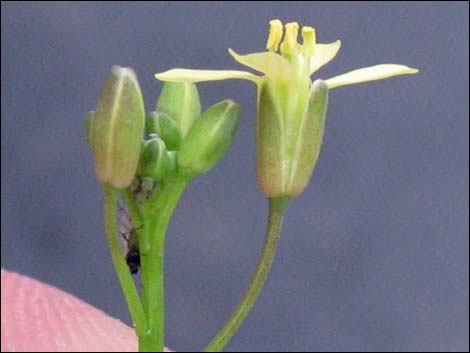 |
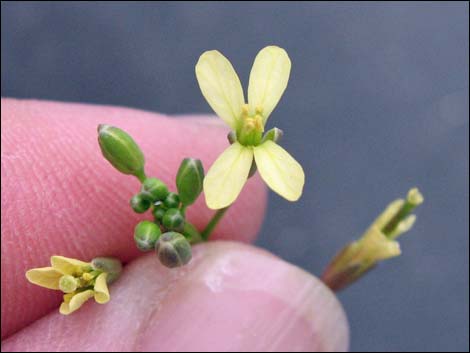 Flowers are yellow with four narrow petals |
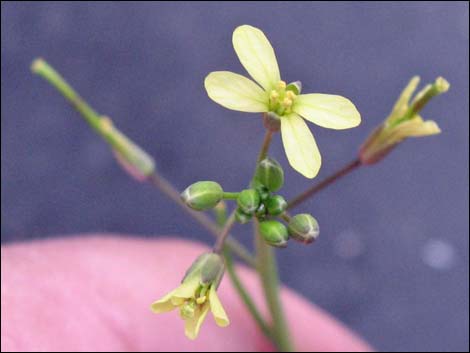 Flowers are yellow with four narrow petals |
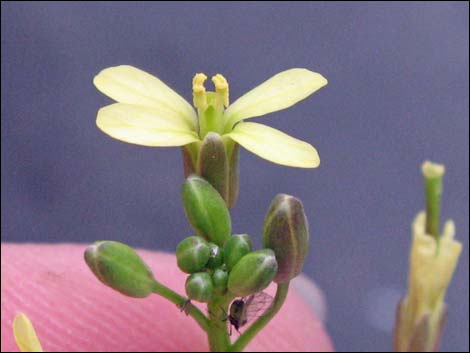 |
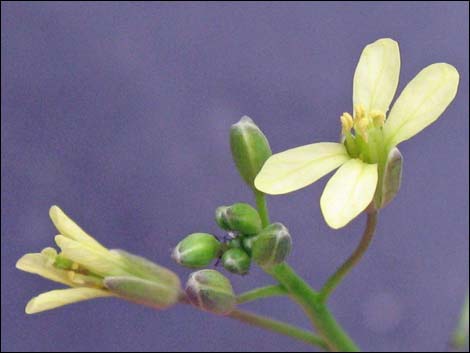 |
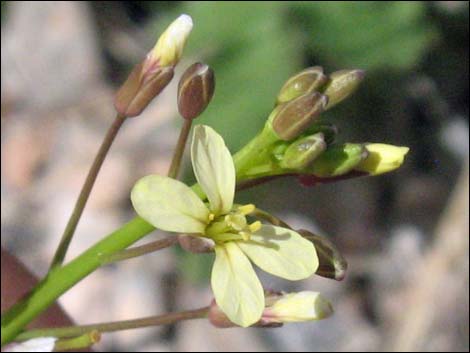 Flowers are yellow with four narrow petals |
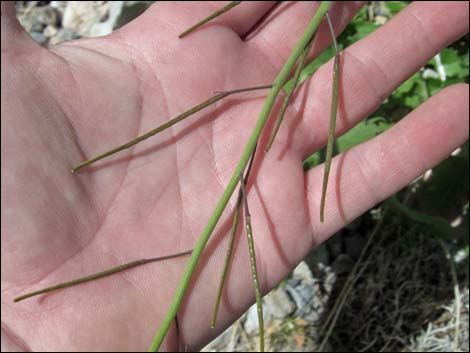 Seed pods are long and thin |
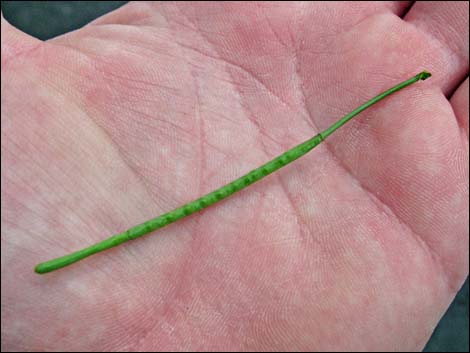 Seed pod |
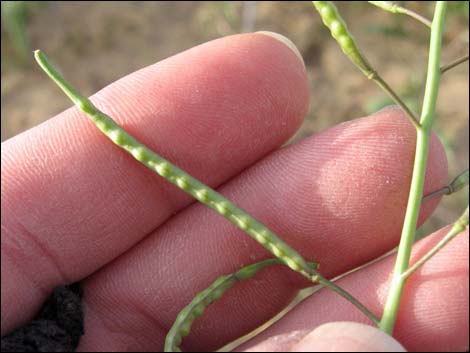 Seed pods are long and thin; held upright and out from the stem |
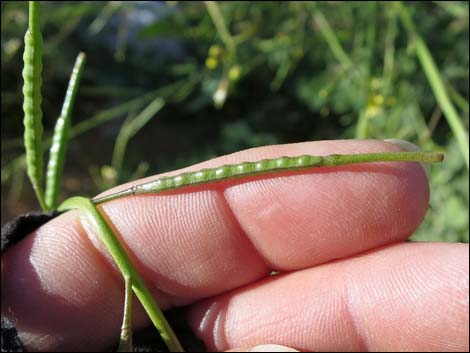 Seed pod |
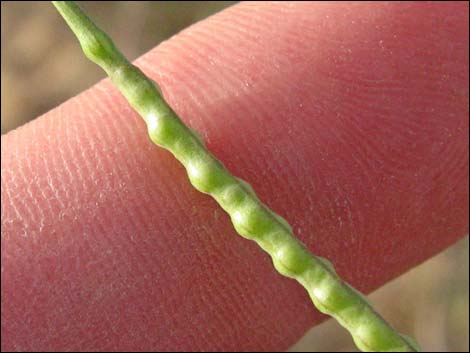 Seed pod |
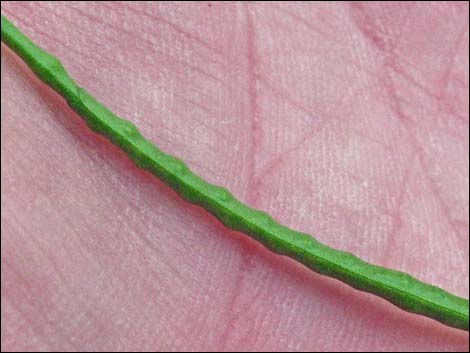 Seed pod |
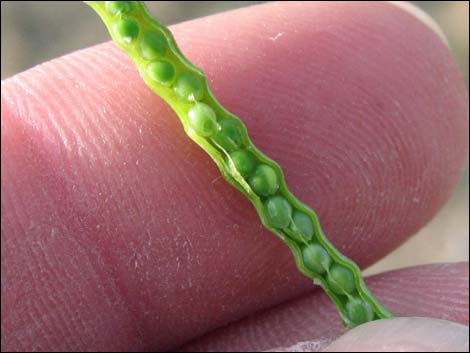 Seeds in a pod |
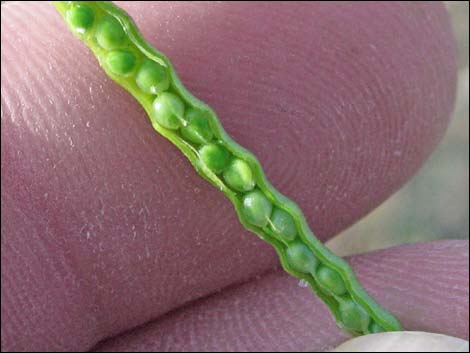 Seeds in a pod |
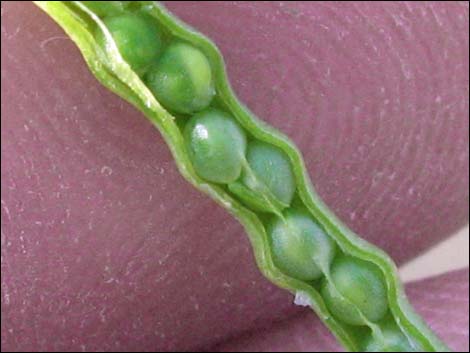 Seeds in a pod |
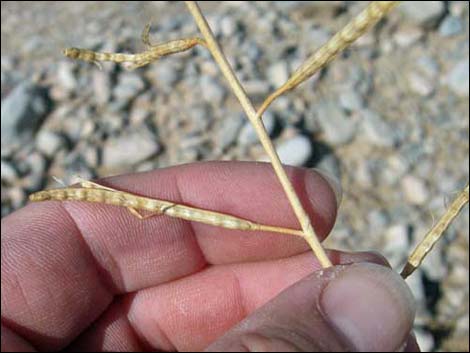 |
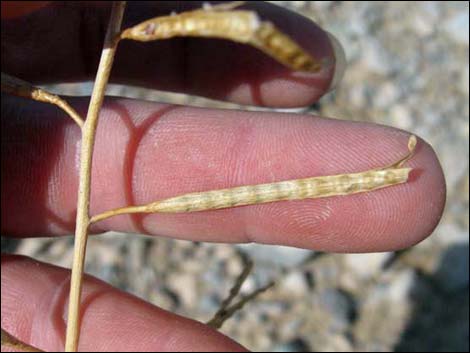 |
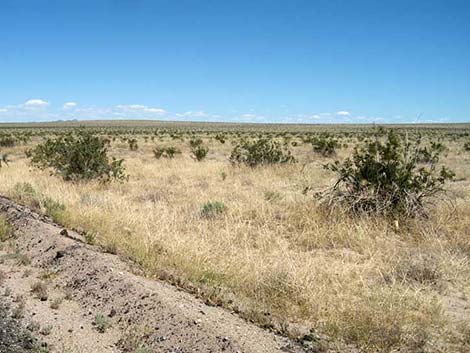 Sahara mustard is capable of taking over large areas |
 Sahara mustard is capable of taking over large areas |
Note: All distances, elevations, and other facts are approximate. Names generally follow the USDA database.
![]() ; Last updated 200909
; Last updated 200909
| All Annual Forbs | Plant Species Index | Glossary | Copyright, Conditions, Disclaimer | Home |